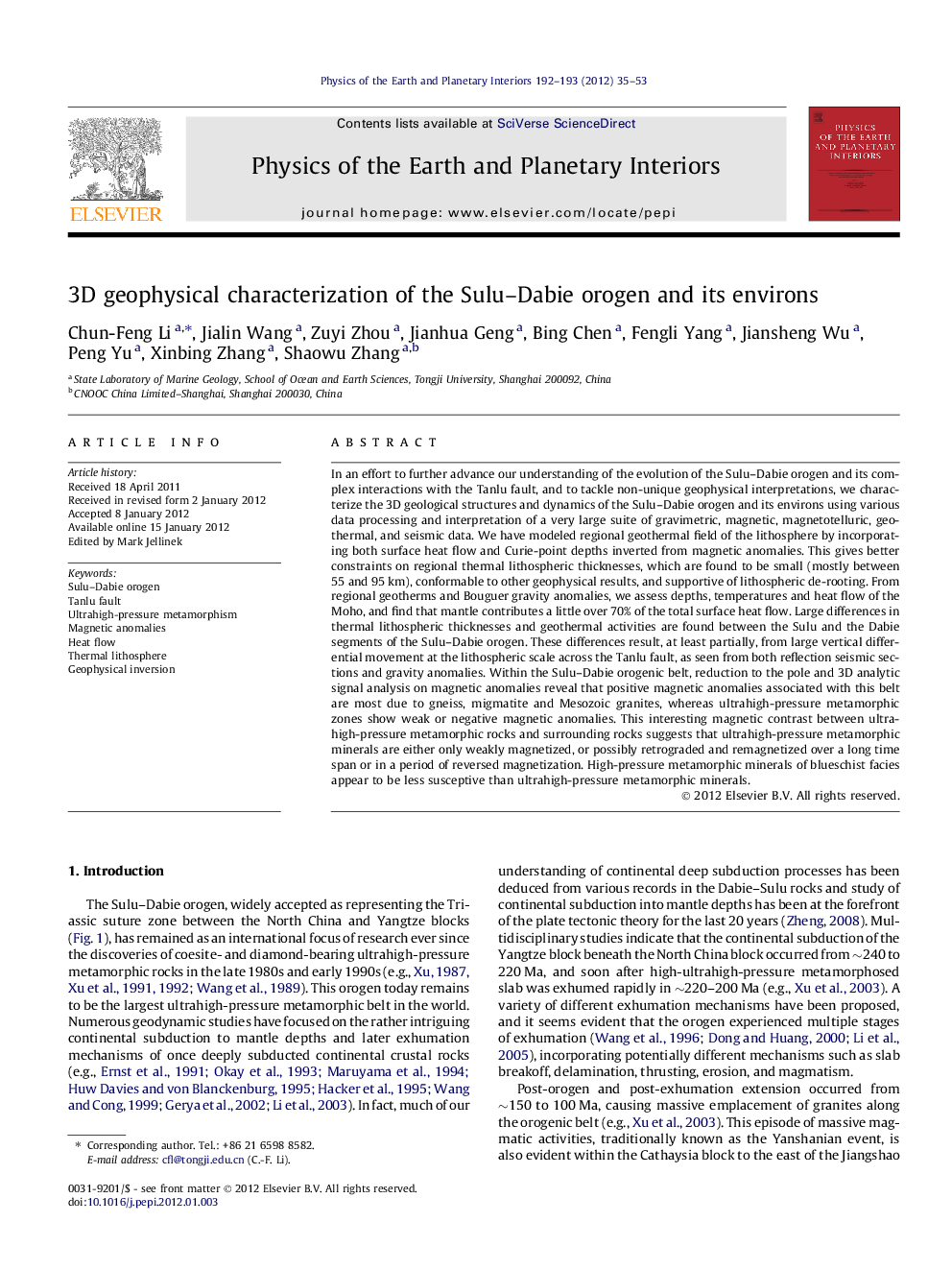| کد مقاله | کد نشریه | سال انتشار | مقاله انگلیسی | نسخه تمام متن |
|---|---|---|---|---|
| 4741857 | 1641538 | 2012 | 19 صفحه PDF | دانلود رایگان |

In an effort to further advance our understanding of the evolution of the Sulu–Dabie orogen and its complex interactions with the Tanlu fault, and to tackle non-unique geophysical interpretations, we characterize the 3D geological structures and dynamics of the Sulu–Dabie orogen and its environs using various data processing and interpretation of a very large suite of gravimetric, magnetic, magnetotelluric, geothermal, and seismic data. We have modeled regional geothermal field of the lithosphere by incorporating both surface heat flow and Curie-point depths inverted from magnetic anomalies. This gives better constraints on regional thermal lithospheric thicknesses, which are found to be small (mostly between 55 and 95 km), conformable to other geophysical results, and supportive of lithospheric de-rooting. From regional geotherms and Bouguer gravity anomalies, we assess depths, temperatures and heat flow of the Moho, and find that mantle contributes a little over 70% of the total surface heat flow. Large differences in thermal lithospheric thicknesses and geothermal activities are found between the Sulu and the Dabie segments of the Sulu–Dabie orogen. These differences result, at least partially, from large vertical differential movement at the lithospheric scale across the Tanlu fault, as seen from both reflection seismic sections and gravity anomalies. Within the Sulu–Dabie orogenic belt, reduction to the pole and 3D analytic signal analysis on magnetic anomalies reveal that positive magnetic anomalies associated with this belt are most due to gneiss, migmatite and Mesozoic granites, whereas ultrahigh-pressure metamorphic zones show weak or negative magnetic anomalies. This interesting magnetic contrast between ultrahigh-pressure metamorphic rocks and surrounding rocks suggests that ultrahigh-pressure metamorphic minerals are either only weakly magnetized, or possibly retrograded and remagnetized over a long time span or in a period of reversed magnetization. High-pressure metamorphic minerals of blueschist facies appear to be less susceptive than ultrahigh-pressure metamorphic minerals.
► Ultrahigh-pressure metamorphic rocks are correlated to weak or negative magnetic anomalies.
► Regional surface heat flow measurements are negatively correlated with Curie-point depths.
► Geothermal field modeling is constrained by both surface heat flow and Curie-point depths.
► Thermal lithosphere is thin and mantle contributes to over 70% of the total surface heat flow.
► Large-scale and persistent late Mesozoic uplift and exhumation occurred east of the Tanlu fault.
Journal: Physics of the Earth and Planetary Interiors - Volumes 192–193, February 2012, Pages 35–53